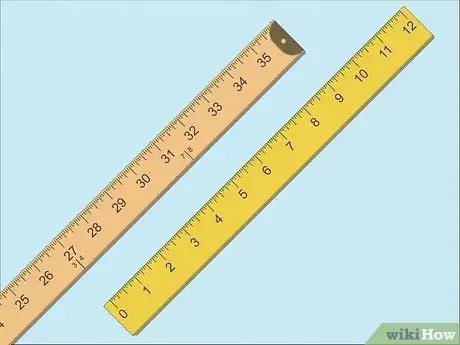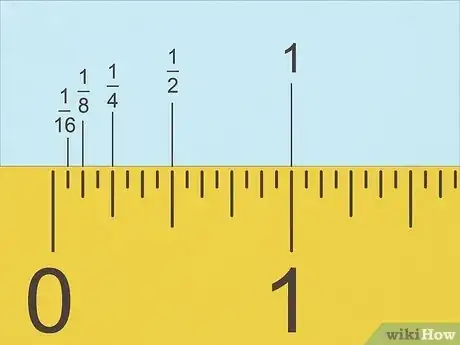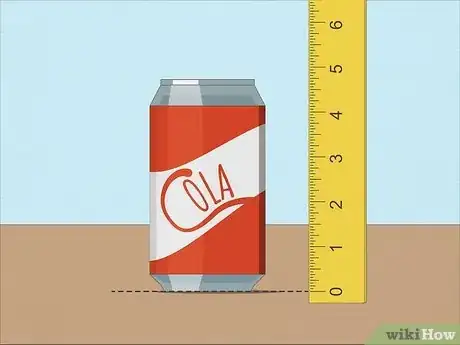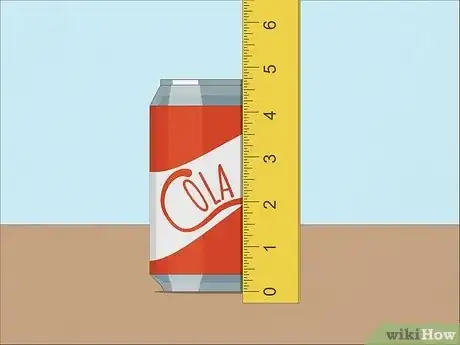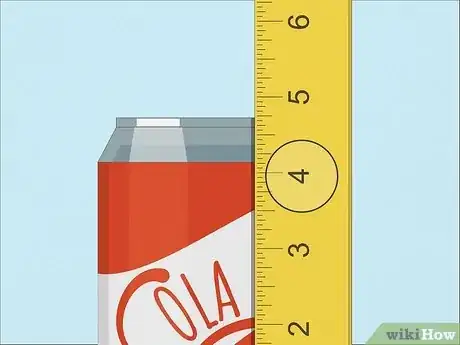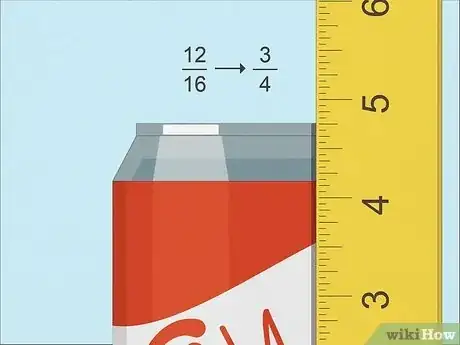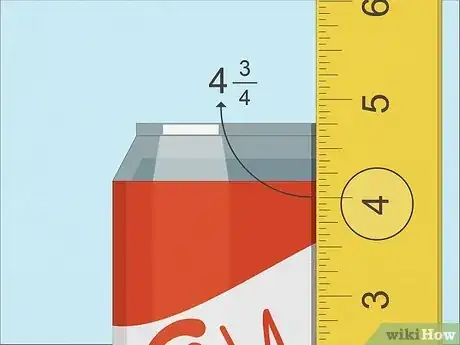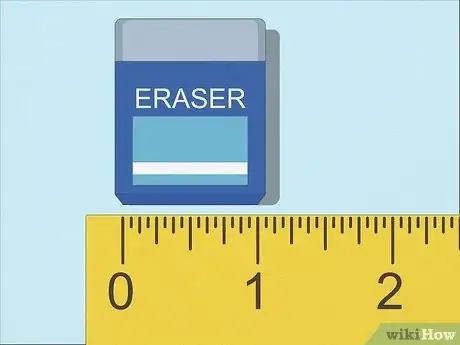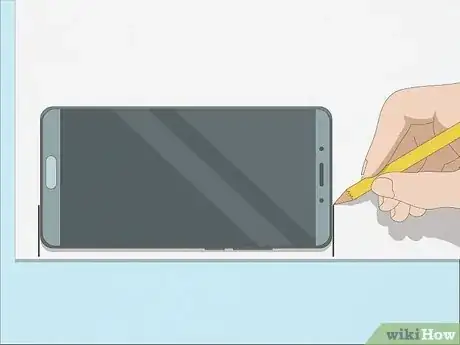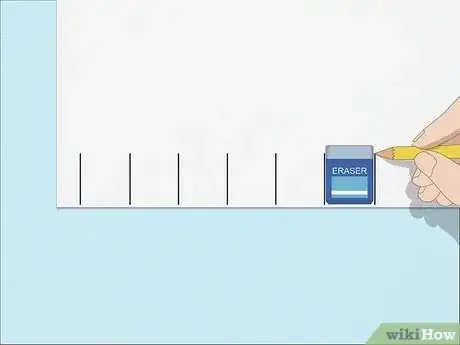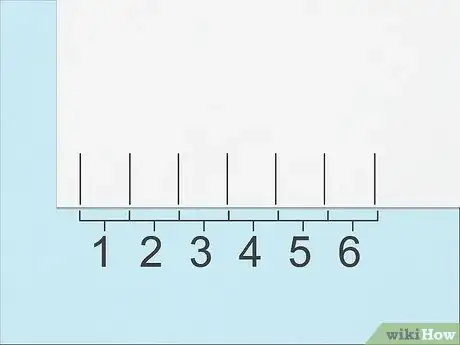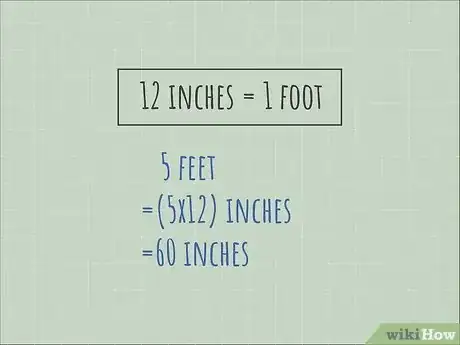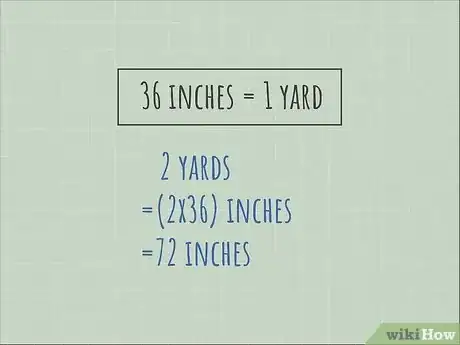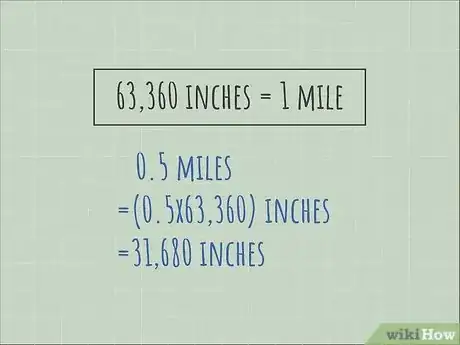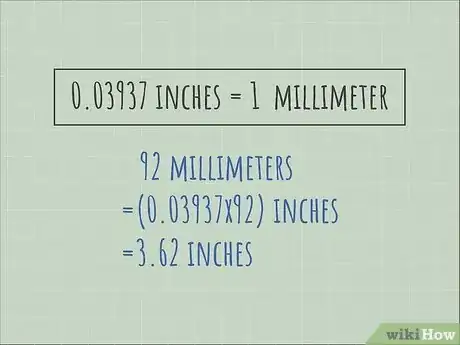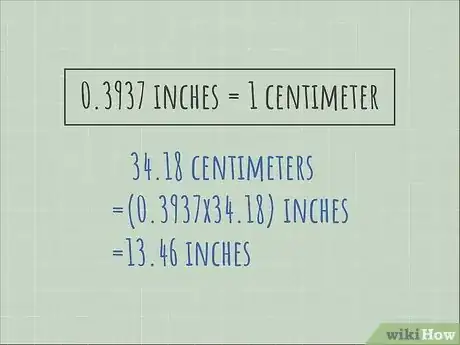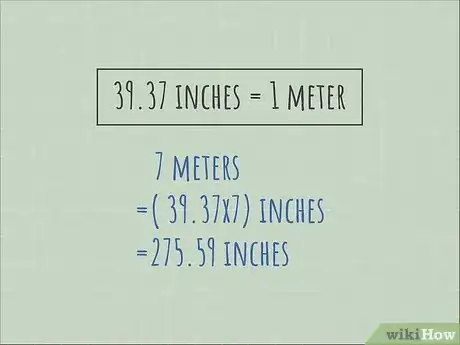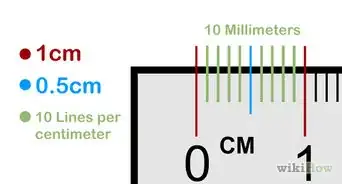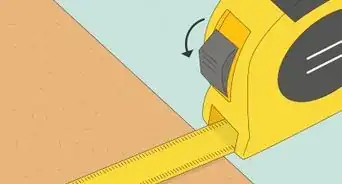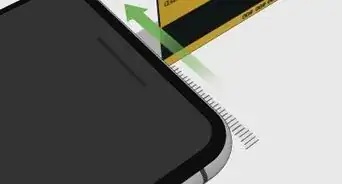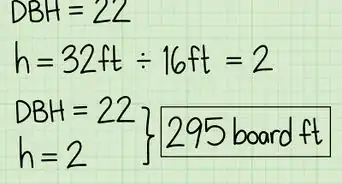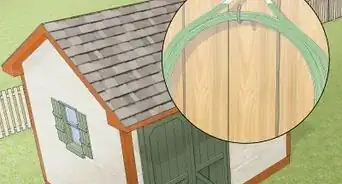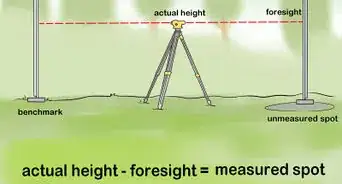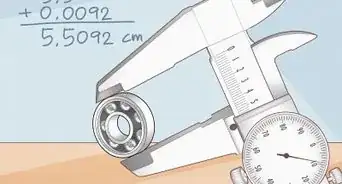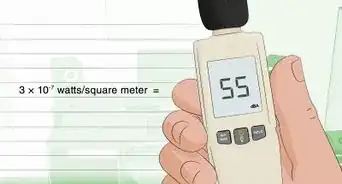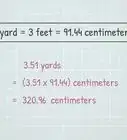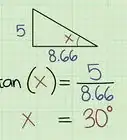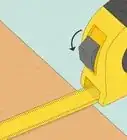This article was co-authored by wikiHow staff writer, Johnathan Fuentes. Johnathan Fuentes is a writer based in the New York City region. His interests as a writer include space exploration, science education, immigration, Latinx cultures, LGBTQ+ issues, and long-form journalism. He is also an avid hiker and has backpacked in Alaska and Newfoundland, Canada. A son of Cuban immigrants, he is bilingual in English and Spanish. Prior to joining wikiHow, he worked in academic publishing and was a freelance writer for science websites. He graduated from Columbia University in 2021, where he studied nonfiction writing and wrote for the student newspaper. He is currently counting down the seconds until the release of Kerbal Space Program 2 in 2023—a game that will almost certainly take up what little free time he has.
There are 17 references cited in this article, which can be found at the bottom of the page.
This article has been viewed 259,230 times.
Learn more...
Measuring objects in inches might seem straightforward. But what if you’re not accustomed to using a ruler or don’t have one handy? Or what if you only know metric units? If this sounds like you, don’t fret. There are lots of ways to get around these problems—including converting metric units to inches, learning to use rulers and other tools to measure inches precisely, and even approximating inches using everyday items. This article will teach you all of these methods using easy, step-by-step instructions. Keep reading to learn how to measure in inches in any scenario.
Things You Should Know
- Use a ruler, yardstick, measuring tape, or some other tool that displays inches to measure objects. Note that inches are divided into fractions: ½, ¼, ⅛, and 1/16.
- Use the top of your thumb or an object of similar length to approximate measurements in inches, if you don’t have a measuring tool handy.
- There are 12 inches in a foot. To convert feet to inches, multiply the number of feet by 12. To convert inches to feet, divide the number of inches by 12.
- 1 cm = roughly 0.3937 inches. To convert cm to inches, multiply the number of cm by 0.3937. To convert inches to cm, divide the number of cm by 0.3937.
Steps
Using a Ruler or Other Measuring Tool
-
1Choose a ruler, yardstick, or other measuring tool that displays inches. These measuring tools are perfect for measuring smaller objects like a book or smartphone. To measure larger objects, use measuring tape.[1]
- For example, use a measuring stick if you’re trying to measure the length of something with a rigid straight edge. Rulers are best for short distances, while yard sticks are better for objects that are 1 to 3 feet (0.30 to 0.91 m) long.
- Use a rigid, retractable tape measure to measure large objects or spaces, like the width of a couch or the height of a room.
- Use soft measuring tape to measure curved or rounded objects, like the size of your wrist or the circumference of a hat.
-
2Note that your measuring tool divides inches into smaller lengths. Each line represents a certain fraction of an inch. Count the number of small lines in between the bigger, numbered lines on your measuring tool. The number of lines determines how your tool divides inches into smaller fractions.[2]
- If your measuring tool has 1 unnumbered line in between each inch, then the inches are divided into halves (½). In other words, two ½ inches add up to 1 inch.[3]
- If there are 3 unnumbered lines, the inches are broken down into quarters (¼). This means that four ¼ inches add up to 1 inch.[4]
- If there are 7 unnumbered lines, the inches are broken down into eighths (⅛). Eight ⅛ inches add up to 1 inch.[5]
- If there are 15 unnumbered lines, the inches are broken down into sixteenths (1/16). Sixteen 1/16 inches add up to 1 inch.[6]
Advertisement -
3Align the “0” line with the end of the object you’re measuring. Place the starting end of the measuring tool where it says “0” against the closest edge of the object or distance you’re trying to measure. Make sure the starting edge of the measuring tool and the edge of the object are perfectly aligned to get an accurate measurement.[7]
- If you look closely at your measuring tool, you may see a tiny bit of space between the “0” line and the edge of your tool. Be sure to always measure from the “0” line to ensure accurate measurements.
- If the starting edge of your tool is not marked with a “0,” measure from the line that’s closest to the end of your tool.
-
4Hold your measuring tool parallel to the length you’re trying to measure. Make sure you’re not holding your tool on an angle since that could make your measurement inaccurate.[8]
- If you’re using a ruler or other measuring stick, make sure the stick lies flat against the edge of the object or line being measured.
- If you’re using measuring tape, wrap the tape around the entire distance being measured.
-
5Find the last whole inch that's part of your measurement. For example, if the very last line on your measurement is between the 4 line and 5 line, then the last whole inch is 4. This is the number of whole inches in the length that you’re measuring.[9]
- If your measurement ends exactly on a numbered line, use the number on that line as the whole inch value. For example, if the very last line of your measurement is the 8 line, then your measurement is exactly 8 inches.
- Remember that the numbered values on your measuring tool correspond to whole inches. The shorter, unnumbered lines in between the numbered values are fractions of an inch.
-
6Count the unnumbered lines after the last numbered line. For example, the if last numbered line in your measurement was the 4 line, count the unnumbered lines after 4 until you reach the end of your measurement. Make sure to include the final line in your count.[10]
- If your measurement ended exactly on a numbered line, you can skip this step.
-
7Convert the unnumbered lines you counted into a fraction. Remember that a fraction has a top number and a bottom number. The top number of the fraction is the unnumbered lines you counted, while the bottom number is the total number of unnumbered between each inch + 1.[11]
- For example, say you counted 3 unnumbered lines and your measuring tool has a total of 15 unnumbered lines between each inch. Your fraction would be 3 over 16 (since 15+1 =16). This is written as 3/16.
- If possible, simplify your fraction by dividing the top and bottom numbers by their common factors. For example, if your fraction is 12/16, you can simplify this to ¾ since 12 and 16 are both divisible by 4.
- If your original measurement ended exactly on a numbered line, you can skip this step since there is no extra fraction to add.
-
8Add the fraction to the whole inch to get your final measurement. For example, if the last whole inch on your measurement was 4, and your fraction is 3/16, then the final measurement is 4 3/16 inches.[12]
- Skip this step if your measurement ended exactly on a numbered line, since there is no extra fraction to add.
Estimating Inches Using Everyday Items
-
1Find an object about 1 inch long to use as a reference. For example, if you’re an adult, the top of your thumb from the tip to the first knuckle is probably about 1 inch long. You can also use an eraser, paperclip, sewing pin, water bottle cap, U.S. quarter, or Canadian $1 coin.[13]
-
2Trace the length of the object you’re measuring onto a sheet of paper. Place the edge you want to measure on a blank sheet of white paper. Use a pencil to trace the length of the edge from 1 end to the other.
- The line you trace onto the paper should be the exact same length as the edge you want to measure. After tracing the edge, you can remove it from the paper.
- Make sure that you use white or light-colored paper so that you can clearly see the marks you make.
Tip: If the object you want to measure is longer than a piece of paper, you can also reverse this step by tracing the length of your inch-long object onto a piece of paper. Then, you can use that tracing to roughly measure the length of the object.
-
3Place your inch-long object at one end of the line you traced. Mark where your 1-inch object ends.[14]
- For example, if you’re using your thumb, lay your thumb horizontally on top of the line, with the bottom end of your thumb aligned with the starting point of the line. Then, use a pencil to mark the spot on the line where your thumb ends.
-
4Move your 1-inch object up so it aligns with the last mark you made. Align the starting point of your 1-inch object with that mark. Then create another mark along the line where the end of your 1-inch object is now located. Repeat this process until you’ve made marks along the entire line.[15]
- If the space after the last line is significantly smaller than the rest, use your eye to judge how much shorter that line is and estimate what fraction of an inch it represents. For instance, if the final space is about half as long as the others, count it as half an inch.
- Make sure that the measuring edge of your 1-inch object stays parallel to the line you traced.
-
5Count the number of gaps between the lines you marked. This number is a rough estimate of the number of whole inches you measured. If you estimated an extra fraction of an inch after the last line, add this to the whole number. For instance, if you have 3 gaps and roughly ½ extra inch at the end, your total measurement is 3½ inches.[16]
- Count the spaces in between lines, not the lines themselves.
- If there is an extra fraction of an inch at the end of your measurement, don’t forget to include it.
Converting Feet, Yards, and Miles to Inches
-
1Convert feet into inches by multiplying the number of feet by 12. There are 12 inches in every 1 foot. For example, if you have a measurement of 5 feet, multiply it by 12 to get a measurement of 60 inches.[17]
- To convert inches to feet, divide the number of inches by 12. For example, if an object that’s 48 inches long, its length in feet is 4 ft., since 48/12 = 4.
- If you get a decimal in your answer, you can take the decimal part and multiply it by 12 to convert the decimal back into inches. For example, if an object is 30 inches long, its length in feet is 2.5 ft since 30/12 = 2.5. Since .5 x 12 = 6, the object’s length is 2 ft. 6 in.
-
2Convert yards to inches by multiplying the number of yards by 36. There are 36 inches in every 1 yard. For example, if you have a measurement of 2 yards, multiply it by 36 to get a measurement of 72 inches.[18]
- To convert inches to yards, divide the number of inches by 36. For example, if an object measures 108 inches, its length is 3 yards, since 108/36 = 3.
- If you get a decimal in your answer, you can take the decimal part and multiply it by 36 to convert the decimal back into inches. For example, if an object measures 117 inches, its 3.25 yards long since 117/36 = 3.25. Since .25 x 36 = 9, the object’s length is 3 yards, 9 inches.
-
3Convert miles to inches by multiplying the number of miles by 63,360. There are 63,360 inches in every mile. For example, if you’re given a distance of 0.5 miles, multiply this by 63,360 to get a measurement of 31680 inches.[19]
- To convert inches to miles, divide the number of inches by 63,360. For example, if an object measures 107,712 inches, its 1.7 miles long since 107,712/63,360 = 1.7.
- You don’t need to convert the decimal part back to inches since most people are used to seeing mile measurements with decimals in them.
Converting Metric Measurements to Inches
-
1Convert millimeters to inches by multiplying by 0.03937. 1 millimeter equals roughly 0.03937 inches. For example, if you have a measurement of 92 millimeters, multiply this by 0.03937 to get 3.62 inches.[20]
- To convert inches to millimeters, divide the number of inches by 0.03937. For example, if an object measures 8 inches, its length is roughly 203.2 millimeters, since 8/0.03937 = 203.2.
- You’ll usually get decimal answers when converting metric units to inches, or inches to metric units. For simplicity, you can round answers to show only one or two decimal places.
-
2Convert centimeters to inches by multiplying by 0.3937. 1 centimeter equals roughly 0.3937 inches. For example, if you have a measurement of 34.18 centimeters, multiply it by 0.3937 to get a value of 13.46 inches.[21]
- To convert inches to centimeters, divide the number of inches by 0.3937. For example, if an object measures 10 inches, its length is roughly 25.4 centimeters, since 10/0.3937 = 25.4.
-
3Convert meters to inches by multiplying by 39.37. 1 meter equals roughly 39.37 inches. For example, if you have a distance of 7 meters, multiply 7 by 39.37 to find the measurement of that distance in inches. In this case, that distance would be 275.59 inches.[22]
- To convert inches to meters, divide the number of inches by 39.37. For example, if an object measures 95 inches, its length is roughly 2.4 meters, since 95/39.37 = 2.4.
Our Most Loved Articles & Quizzes
Community Q&A
-
QuestionWhere is .66 inches on a ruler?
 DonaganTop AnswererMost rulers are not calibrated in hundredths of an inch. .66" is 2/3 of an inch, which is a little more than halfway from the mark for a half-inch and the mark for 3/4 of an inch.
DonaganTop AnswererMost rulers are not calibrated in hundredths of an inch. .66" is 2/3 of an inch, which is a little more than halfway from the mark for a half-inch and the mark for 3/4 of an inch. -
QuestionWhat if we do not have a ruler?
 DonaganTop AnswererTo measure anything, you need a measuring device such as a ruler, yardstick, measuring tape, etc.
DonaganTop AnswererTo measure anything, you need a measuring device such as a ruler, yardstick, measuring tape, etc.
Things You'll Need
- Ruler, yardstick, or measuring tape
- Paper
- Pencil
- 1-inch measuring object (for estimates)
- Calculator
References
- ↑ https://www.ck12.org/measurement/tools-for-measurement-of-customary-and-metric-lengths/lesson/Appropriate-Measurement-Tools-MSM6/
- ↑ http://www.homeschoolmath.net/teaching/f/measuring_inches.php
- ↑ https://www.inchcalculator.com/how-to-read-a-ruler/
- ↑ https://www.inchcalculator.com/how-to-read-a-ruler/
- ↑ https://www.inchcalculator.com/how-to-read-a-ruler/
- ↑ https://www.inchcalculator.com/how-to-read-a-ruler/
- ↑ https://www.youtube.com/watch?v=_1r7WVh2Zgc#t=3m20s
- ↑ https://youtu.be/VzW2sdCe228?t=19
- ↑ https://www.youtube.com/watch?v=mKarbrOme_Y#t=3m25s
- ↑ https://www.youtube.com/watch?v=mKarbrOme_Y#t=3m32s
- ↑ https://www.inchcalculator.com/how-to-read-a-ruler/
- ↑ https://www.youtube.com/watch?v=_1r7WVh2Zgc#t=2m
- ↑ https://measuringstuff.com/11-objects-that-are-1-inch-long-7-is-surprising/
- ↑ https://www.youtube.com/watch?v=J5kZtB0ljXk#t=1m10s
- ↑ https://www.youtube.com/watch?v=J5kZtB0ljXk#t=1m13s
- ↑ https://www.youtube.com/watch?v=J5kZtB0ljXk#t=1m34s
- ↑ https://www.metric-conversions.org/length/feet-to-inches.htm
- ↑ https://www.metric-conversions.org/length/feet-to-inches.htm
- ↑ http://www.metric-conversions.org/length/miles-to-inches.htm
- ↑ https://www.metric-conversions.org/length/millimeters-to-inches.htm
- ↑ https://www.metric-conversions.org/length/centimeters-to-inches.htm
- ↑ http://www.metric-conversions.org/length/meters-to-inches.htm
About This Article
To measure in inches, start by lining up a ruler, yardstick, or tape measure with the object or distance you're trying to measure so the "0" is at one of the ends. Then, look for the last full inch before the opposite end of the object or distance you're measuring. A full inch will be marked by a long line with a number at the end. Once you've found that, count the unnumbered lines past it until you reach the very end of the object or distance. Remember that the unnumbered lines represent fractions. For example, if there are 7 short, unnumbered lines in between each full inch, each of those short lines represent 1/8 of an inch. Finish by adding the fractions you counted to the whole number from the last full inch. Before you measure, be sure to check that the tool you're using has inch markers, and not just centimeters or other metric units! To learn how to estimate inches using your thumb, scroll down!
